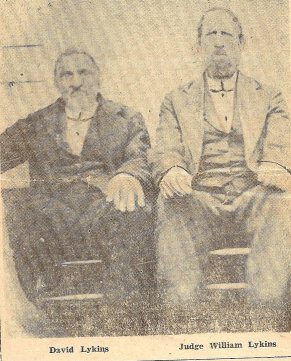
I am used to dealing with the “two men, same name, same area” issues with my NSDAR applicants but I hadn’t come across it within my own family until the other day. It’s not a particularly “fun” problem to run into as some of them can be quite complicated. Recently I had a DAR lady with 4 men of the same name in the same area and three of them were within the same age range to have been brothers, uncles, and/or sons to each other. It was a puzzle that took an extremely long time to unravel. Thankfully, my own conundrum with my 5th great-grandfather wasn’t too terribly difficult but I wanted to share it as an example of how things can go sideways when you don’t pay attention to important details.
I don’t know why but I haven’t really felt like exploring the members of my family who participated in the Confederacy. I mean, I know they’re there and that they’re a part of my family, too, but to me, they’re like a thorn in my family tree that I just don’t want to touch. I just have never felt the need to go down their path in-depth. Their stories don’t really interest me and I only feel slightly petty for saying that. The history major in me says I need to do the research on them, but the woke/modern person I am doesn’t want to bring a lick of attention to what they served. So when I saw this pop up in my tree awhile ago, I sat on it. Okay, I’ve sat on it for like 6 years but this example was such a good teaching moment as to why you need to critically evaluate your documentation to avoid making mistakes that will throw your tree off (and those that will blindly copy you, because they will).
My grandfather David Lykins was likely born in Virginia in 1791. He lived and died in 1882 in Morgan County, Kentucky. He and his wife Nancy Jane Williams had 8 children – 4 sons, 4 daughters. David’s son, my 4th great-grandfather John Couch Lykins, served in the Confederate Army, being one of the last 308 Confederate prisoners of war to leave Camp Morton in Indiana on June 12th, 1865. David’s other son, William, and several of William’s sons also served in the Confederacy. However, another son reportedly moved away and supported the Union, fracturing the family as happened to many families back then.
The issues start here. Multiple online trees have David listed as Captain David of the Confederate Army and at first glance, that might not be extremely out of consideration as several of his sons served in the Confederacy. Yet, they’re totally incorrect. But since several others didn’t catch the error, can you? (and it’s not the highlighted birthplace)

If you didn’t catch it, let me explain. David was 70 years old when the Civil War started and even at its highest age limit of 50 for Confederate conscription, David wouldn’t have been required to serve based on that alone.(1) However, David was living in Kentucky, which wasn’t under conscription even though General Bragg had attempted to install a Confederate government to do just such a thing.(2) That’s not to say David couldn’t have volunteered, but it’s highly unlikely given his advanced age and additionally, the army probably wouldn’t have wanted to haul around a rotund old man who walked with a cane. (Hence his nickname of “Stick.”)

Fold3 has papers related to the Confederacy and there is a David J Lykins of Kentucky who does have several records on there. These records show David enlisted as a private in the 5th KY Mounted Infantry. He was raised to captain by the time he left service. David was captured in Morgan County in December 1862 and transferred to Alton, Illinois, and released on March 2, 1863, after making a hefty bond and swearing an oath of renunciation. The renunciation is particularly of interest here as it has the physical description and age of David. This 28-year-old David was most certainly NOT my grandfather who would have been 72 at this point in 1863.
So that leaves to question then, who was this same-named man as my grandfather? Captain David J Lykins was a son of William Lykins, making him a grandson of my grandfather David J Lykins. He was born in August 1834 and that would have made him 28 years old in March 1863 when he signed the oath of renunciation, putting to end any speculation that the elder David was ever a Confederate captain.
Missed, little details like this can send your tree wildly astray and the bad information only gets perpetuated further when people blindly copy trees, having never examined documents or records to verify the information themselves. I know it’s easier to copy, especially if you’re new to the genealogy game but let this be a lesson to you to slow down and look at every document critically. Invest in a pocket guide to history and have it near your desk as you research – I’m particularly fond of the tiny & portable The Genealogist’s US History Pocket Reference by Nancy Hendrickson. It’s cheap and useful beyond measure, especially when trying to find what wars or major events were happening when in America. Hey, even us history majors don’t remember dates to everything. Nobody would fault you for using a reference book.
Works Cited:
- Muchowski, Keith. Conscription (Civil War), Encyclopedia of Arkansas, 2017. Accessed February 4, 2021. https://encyclopediaofarkansas.net/entries/conscription-6400/
- The Long Road Back to Kentucky, American Battlefield Trust. Accessed February 4, 2021. https://www.battlefields.org/learn/articles/long-road-back-kentucky
